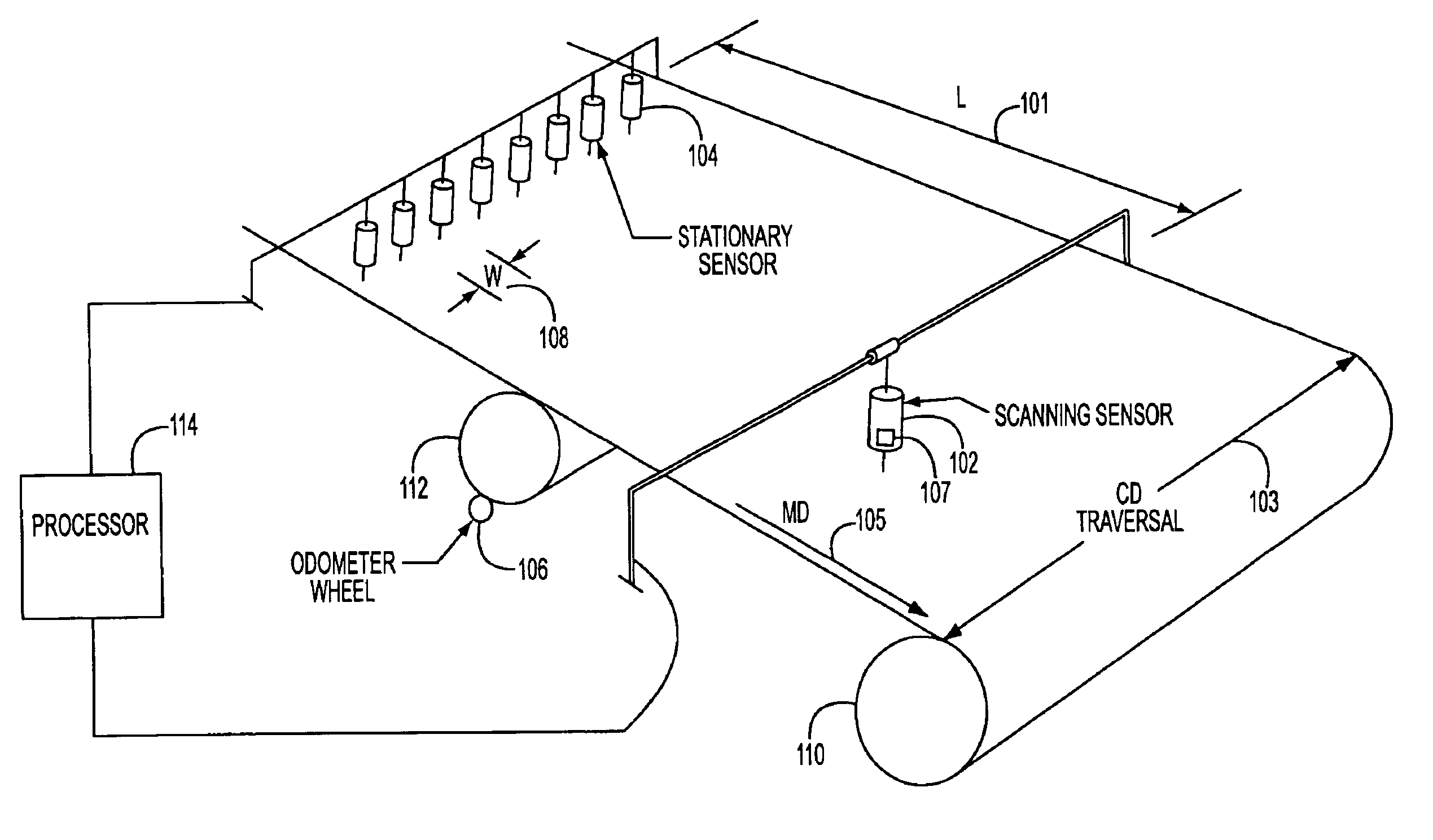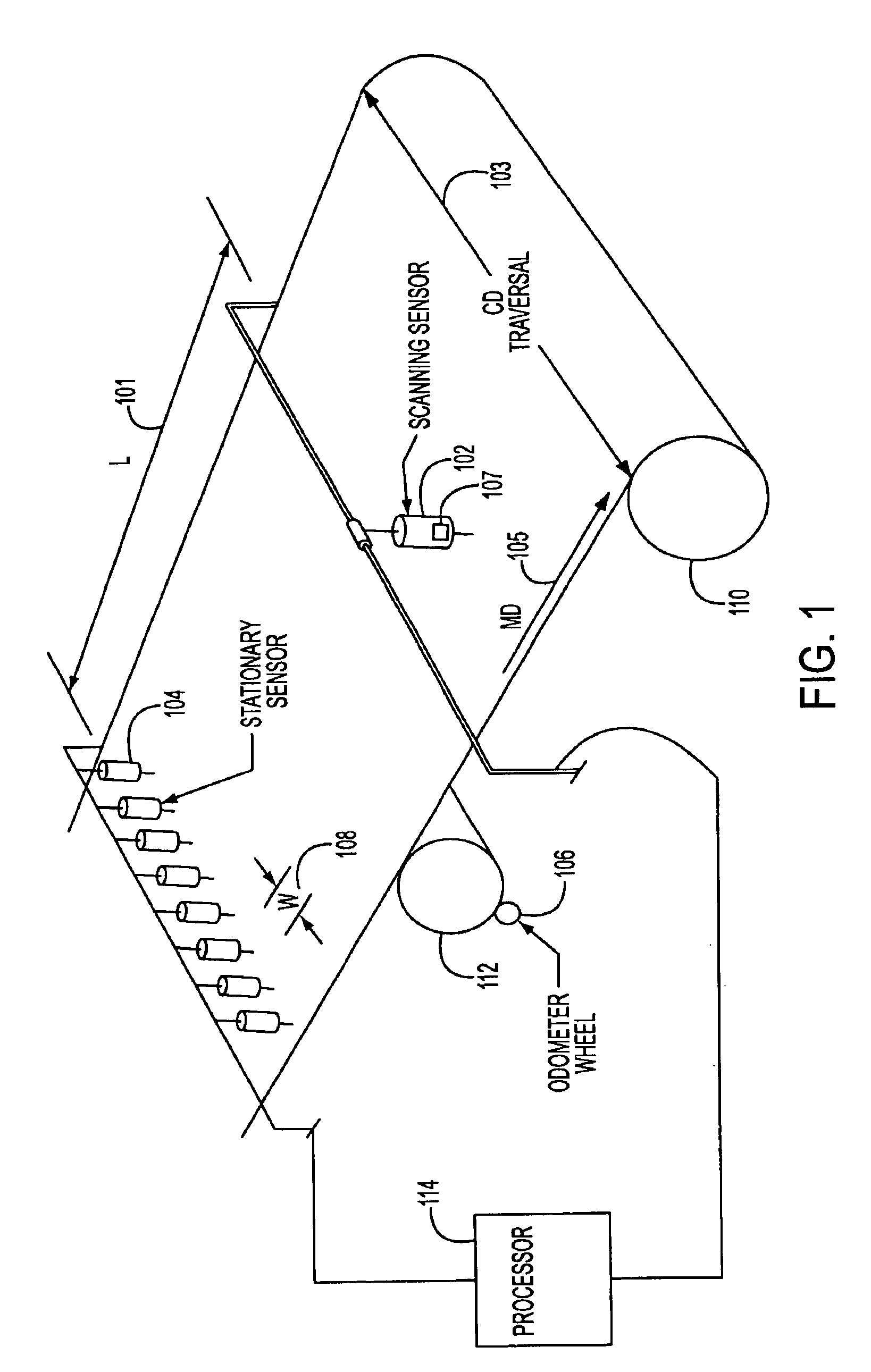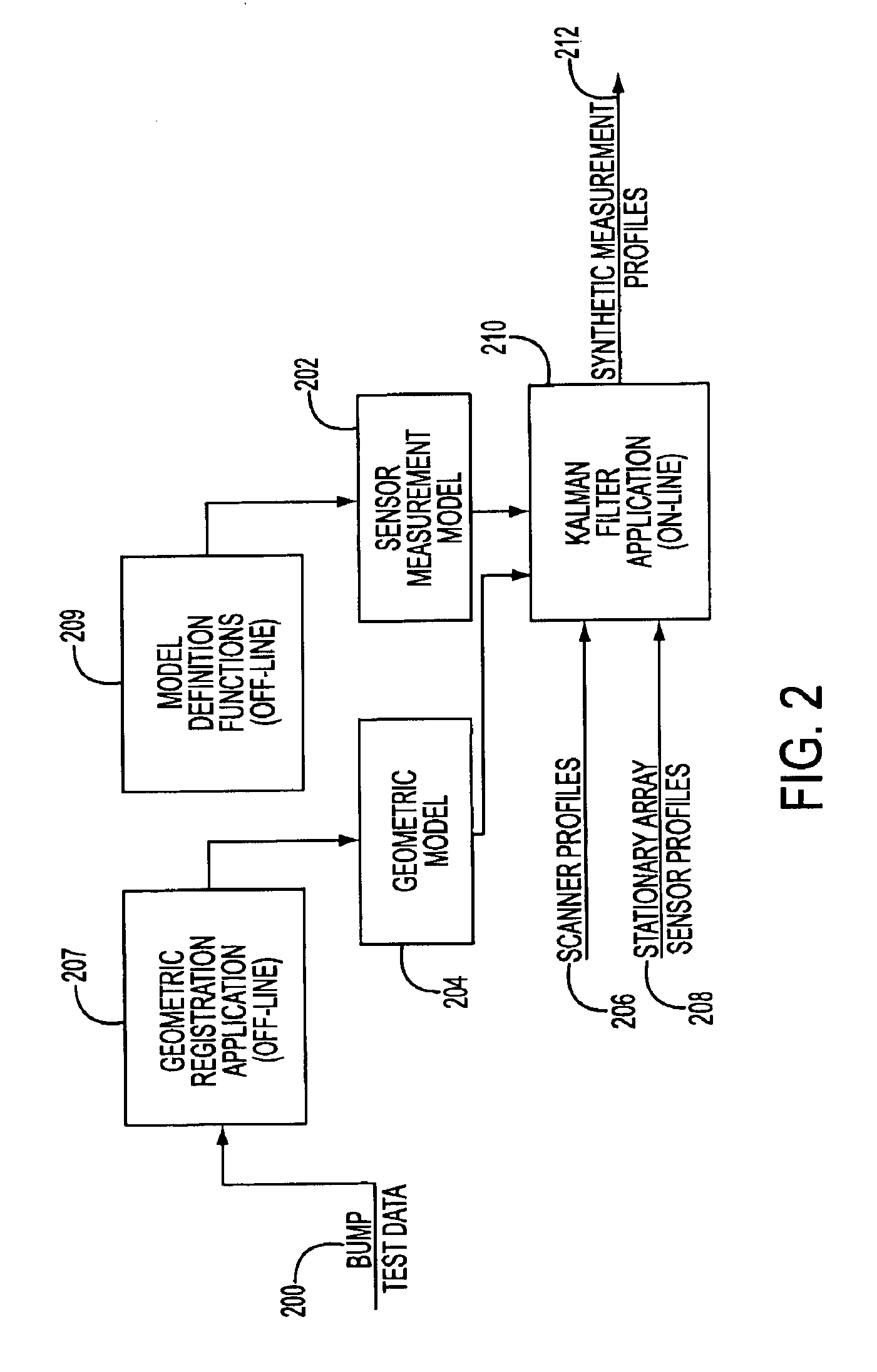Data fusion of stationary array sensor and scanning sensor measurements
a technology of stationary array sensor and scanning sensor, which is applied in the direction of special data processing applications, electric/magnetic measuring arrangements, digital computer details, etc., can solve the problems of high cost, inability to include sensors with a high degree of precision, and the scan rate of scanning sensor is too slow to adequately address the dynamics of cross-directional variations of process properties being controlled, etc., to achieve simple, computational structure, and improve accuracy
- Summary
- Abstract
- Description
- Claims
- Application Information
AI Technical Summary
Benefits of technology
Problems solved by technology
Method used
Image
Examples
Embodiment Construction
The present invention relates to a measurement system, and associated method, which can be applied to any manufacturing process. For example, FIG. 1 illustrates a measurement system for use with a paper production process wherein, according to exemplary embodiments of the present invention, data measurements obtained from plural locations using different types of sensors are fused.
Referring to FIG. 1, a measurement system is illustrated for measuring a variable of at least one property of a product, such as a paper web, and including at least one stationary sensor and one scanning sensor. A stationary sensor shown in FIG. 1 can be a stationary sensor array 104 provided at a first location in the manufacturing process to produce a first array of measurement outputs.
FIG. 1 also illustrates measuring the variable of the product and / or process with a scanning sensor such as scanning sensor 102. The scanning sensor 102 is located at a second location in the manufacturing process to produ...
PUM
 Login to View More
Login to View More Abstract
Description
Claims
Application Information
 Login to View More
Login to View More - R&D
- Intellectual Property
- Life Sciences
- Materials
- Tech Scout
- Unparalleled Data Quality
- Higher Quality Content
- 60% Fewer Hallucinations
Browse by: Latest US Patents, China's latest patents, Technical Efficacy Thesaurus, Application Domain, Technology Topic, Popular Technical Reports.
© 2025 PatSnap. All rights reserved.Legal|Privacy policy|Modern Slavery Act Transparency Statement|Sitemap|About US| Contact US: help@patsnap.com



